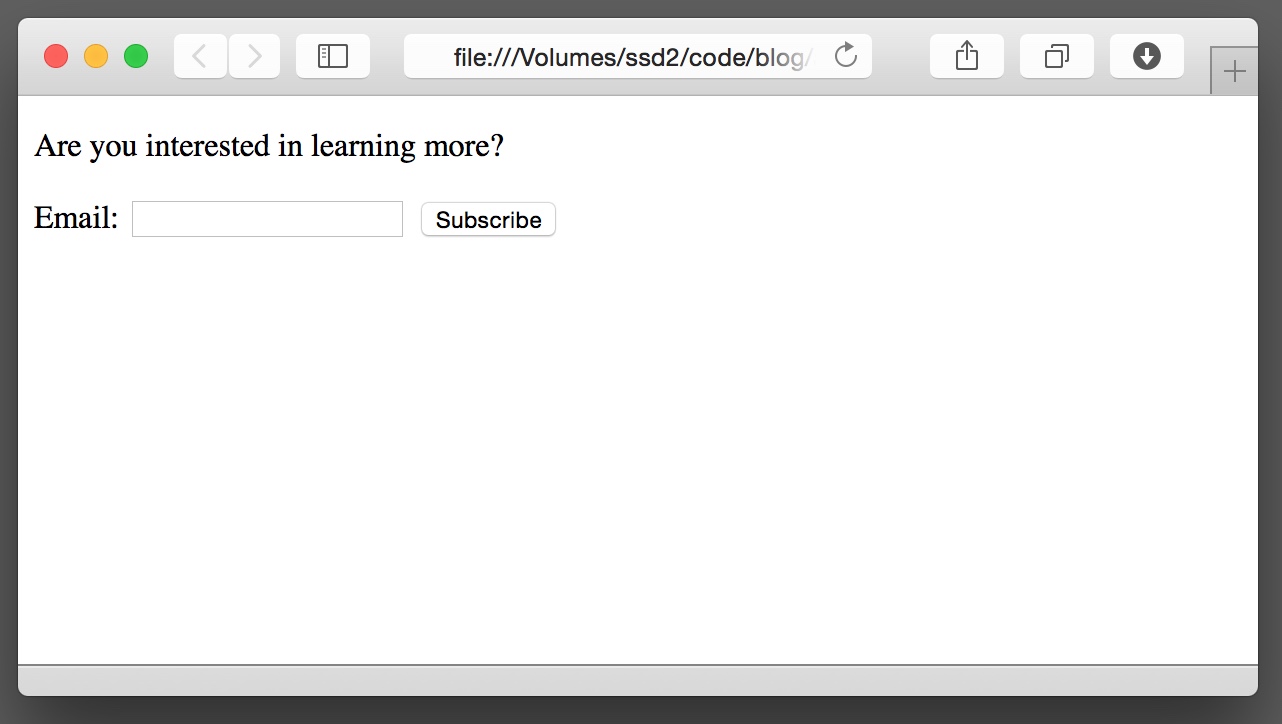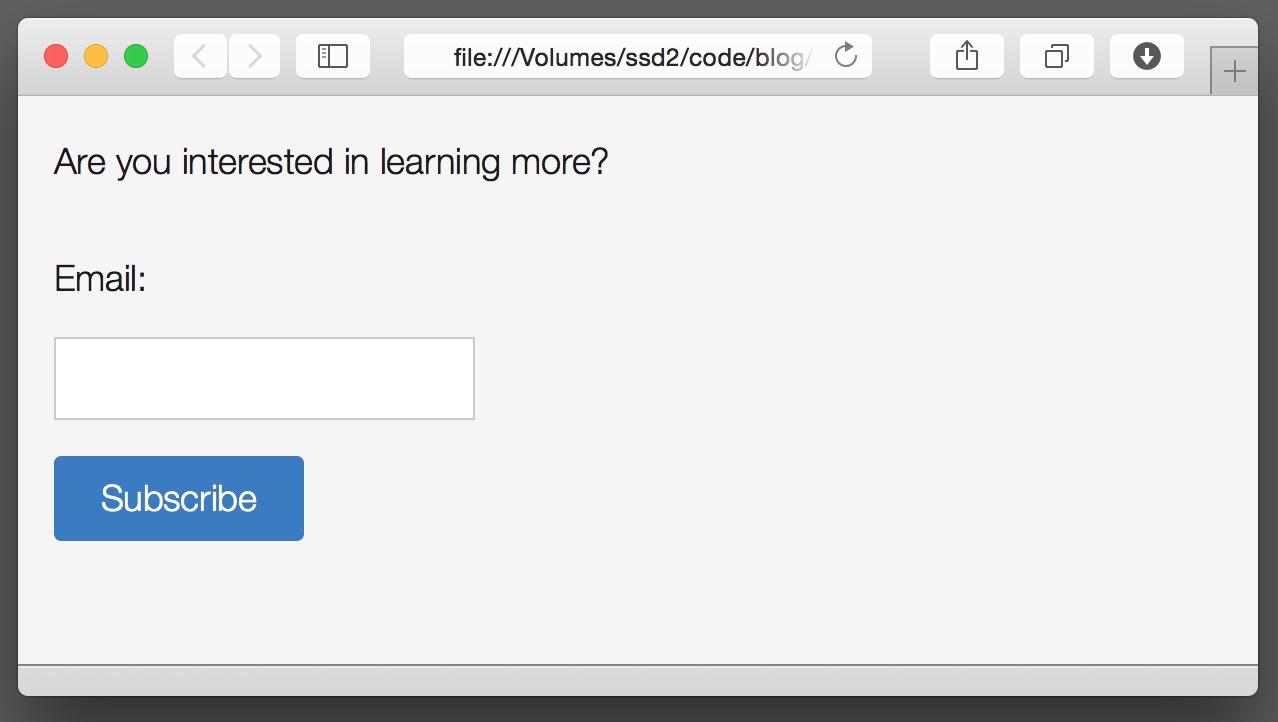I’ve been using Bootstrap for more than two years in multiple projects, and my frustration has been building. First of all, it’s too massive for a small web app. Second, it is not fully self-sufficient; no matter how much you follow its principles of design, you end up with your own CSS styles anyway. Third, and most importantly, its internal design is messy. Having all this in mind, I created tacit, my own CSS framework, which immediately received positive feedback on Hacker News.
Tacit, according to Google, means “understood or implied without being stated.” That’s exactly the idea of the framework. It doesn’t have a single CSS class and can be applied to any valid HTML5 document. For example, you have an HTML document:
<!DOCTYPE html>
<html>
<head>
<title>Subscribe</title>
</head>
<body>
<section>
<p>Are you interested in learning more?</p>
<form>
<label>Email:</label>
<input name="email"/>
<button type="submit">Subscribe</button>
</form>
</section>
</body>
</html>
This is how it looks in Safari:

Now, I add tacit.min.css to it:
<!DOCTYPE html>
<html>
<head>
<title>Subscribe</title>
<link rel="stylesheet" type="text/css"
href="http://yegor256.github.io/tacit/tacit.min.css"/>
</head>
<body>
<section>
<p>Are you interested in learning more?</p>
<form>
<label>Email:</label>
<input name="email" type="text"/>
<button type="submit">Subscribe</button>
</form>
</section>
</body>
</html>
This is how it looks in the same Safari browser:

I hope you got the idea. The HTML itself wasn’t changed at all. All CSS styles are applied to standard HTML elements. Unlike many other CSS frameworks, in Tacit you don’t have to mention CSS classes in the HTML document. The HTML stays clean and only exposes the data in a pure HTML5 way.
The HTML document is still readable and usable, but it doesn’t have the good-looking-graphics component. Tacit adds that component in a non-intrusive manner.
Of course, in many projects, the default layout features of Tacit won’t be enough. In most cases, I still have to add my own CSS classes and inline styles. But Tacit gives me an adequate foundation to start from. It solves most of the problems associated with responsiveness of forms, appearance of form controls, tables, fonts, and colors.
Tacit allows me to focus on functionality from the first day of a project. And the functionality immediately looks attractive. I have tried many other frameworks, including Bootstrap, Kube, and Pure. None of them are designed with this concept in mind. They all put CSS in front of HTML. In all of them, CSS is the most important element of web design, while HTML is something that assists.
Tacit takes a different approach. In Tacit, HTML is king while CSS is a supportive element that only makes data look better.
Enjoy!
